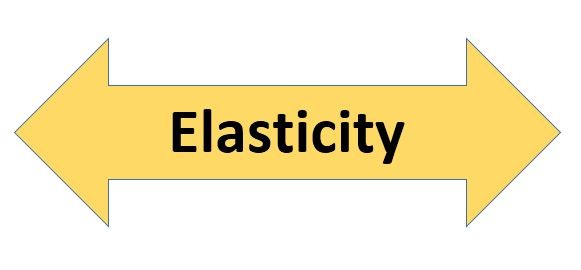The demand for a product is a variable that is influenced by different factors including the price of the product. The effect of influencing factors on demand including elasticity is numerically calculated in three different ways.
- Price elasticity of demand – The change in quantity demanded in response to the changes in the price of the product, while other things remain constant, is measured as a numerical value. This is measured in two different methods.
- Point elasticity of demand
- Arc elasticity
- Income elasticity of demand – This is a measure of the responsiveness of quantity demanded of a product to the change in consumer’s income, while other factors remain constant.
- Cross elasticity of demand – This is a measure of the responsiveness of quantity demanded of a product to the changes in the prices of other products, while other factors remain constant (prices of substitutes and complementary goods).
However, the price elasticity is commonly used for market analysis and it is calculated by using the following formula.∞

Based on the degree of price elasticity of demand, five types can be identified as below.
- Elastic demand → 1 < PED < α
- Inelastic demand → 0 < PED < 1
- Unitary elastic demand → PED = 1
- Perfectly elastic demand → PED = α
- Perfectly inelastic demand → PED = 0
- Number of substitutes available
If more number of substitutes are available in the market the demand for the product that
is being consumed will be price elastic. When there is a slight increase in the price the will demand to be shifted to substitutes
- Luxuries and Necessities
Luxuries are the goods that people can do without and a slight increase in price reduces the demand by a greater proportion. The demand for necessities is price inelastic.
- The nature of definition
If the product is narrowly defined, the demand is elastic. Eg, One type of vegetable. Demand for broadly defined products is price inelastic. Eg. Demand for vegetables
- Time
In the short-run, the time is not sufficient for the consumer to find substitutes. Therefore the demand is inelastic. When the time is long, the demand is elastic.
- Number of uses
If a product is used for a number of purposes, the demand for it will be inelastic. Eg. Electricity. The demand will be elastic when the number of uses of a product is less.
- Proportion of income spent on the product
The higher the proportion spent on a product, the demand for it will be elastic. If a lesser percentage of income is spent, the demand will be price inelastic.
Application of Price Elasticity of Demand
The concept of price elasticity of demand is used by different sectors of the economy when planning out their activities.
- When fixing the price for the product
Price of the product is the key factor that determines the producer’s revenue. The behavior of the revenue when changing the price of the product depends on the nature of the price elasticity.
- If the demand is price elastic, an increase in price reduces the revenue and a fall in price increases the total revenue. Therefore, producers can increase total revenue by selling more number of units at a lesser price.
- If the demand is price inelastic, an increase in price increases the producer’s revenue, and a fall in price reduces it. Hence, it’s advisable for the producer to increase the price when the demand is inelastic.
- When the demand is unitary elastic, change in price does not change the producer’s revenue, except changing the quantity.
2. When imposing indirect taxes on consumer goods by the government.
The governments collect a major proportion of their revenue through taxes. To collect the expected revenue tax is imposed on the product which the demand is inelastic.
3. When planning future plans
The businesses observe the nature of the behavior of the demand for their product in the market when drawing up the business plans. The elasticity of demand gives a clear picture of the market trends.

